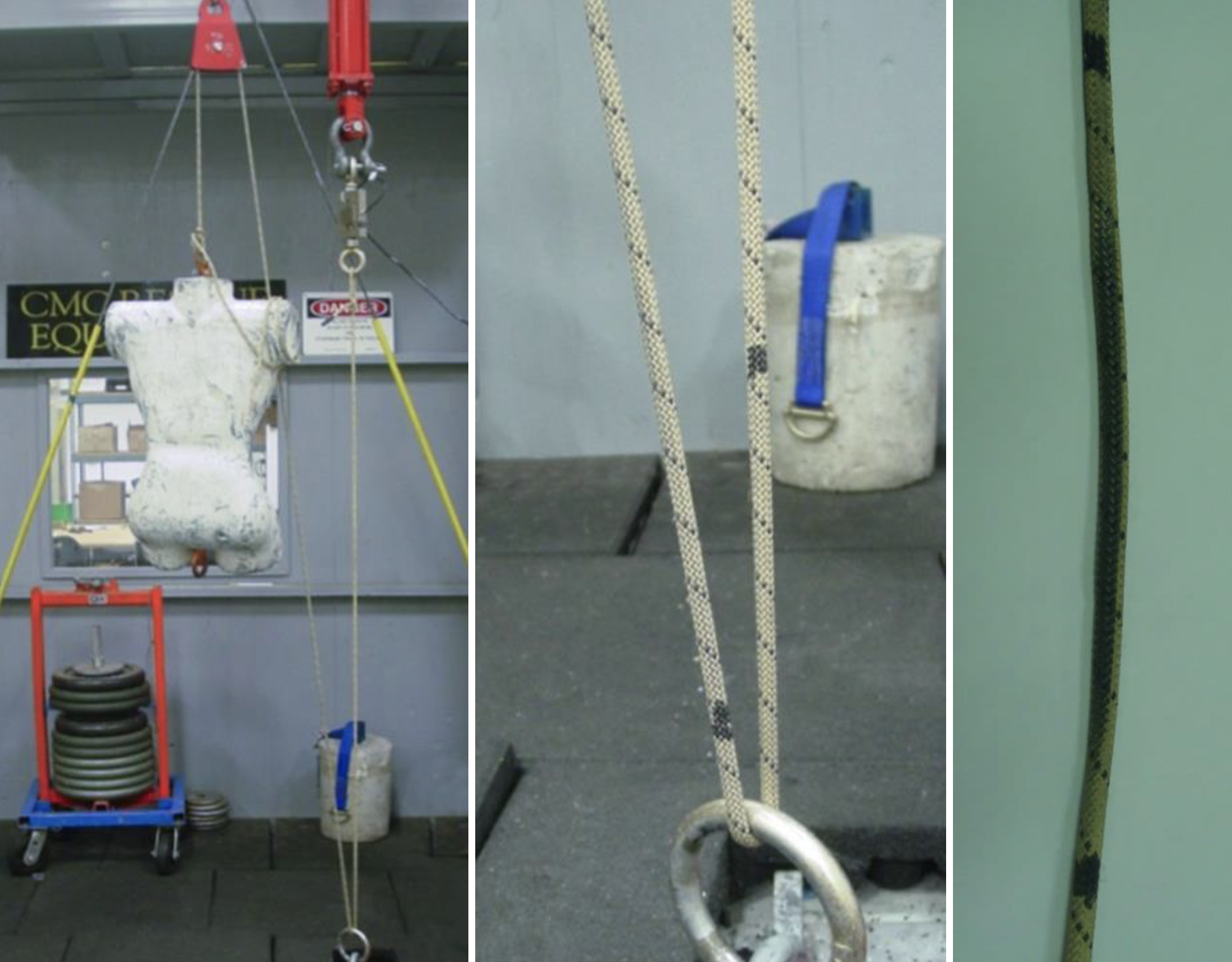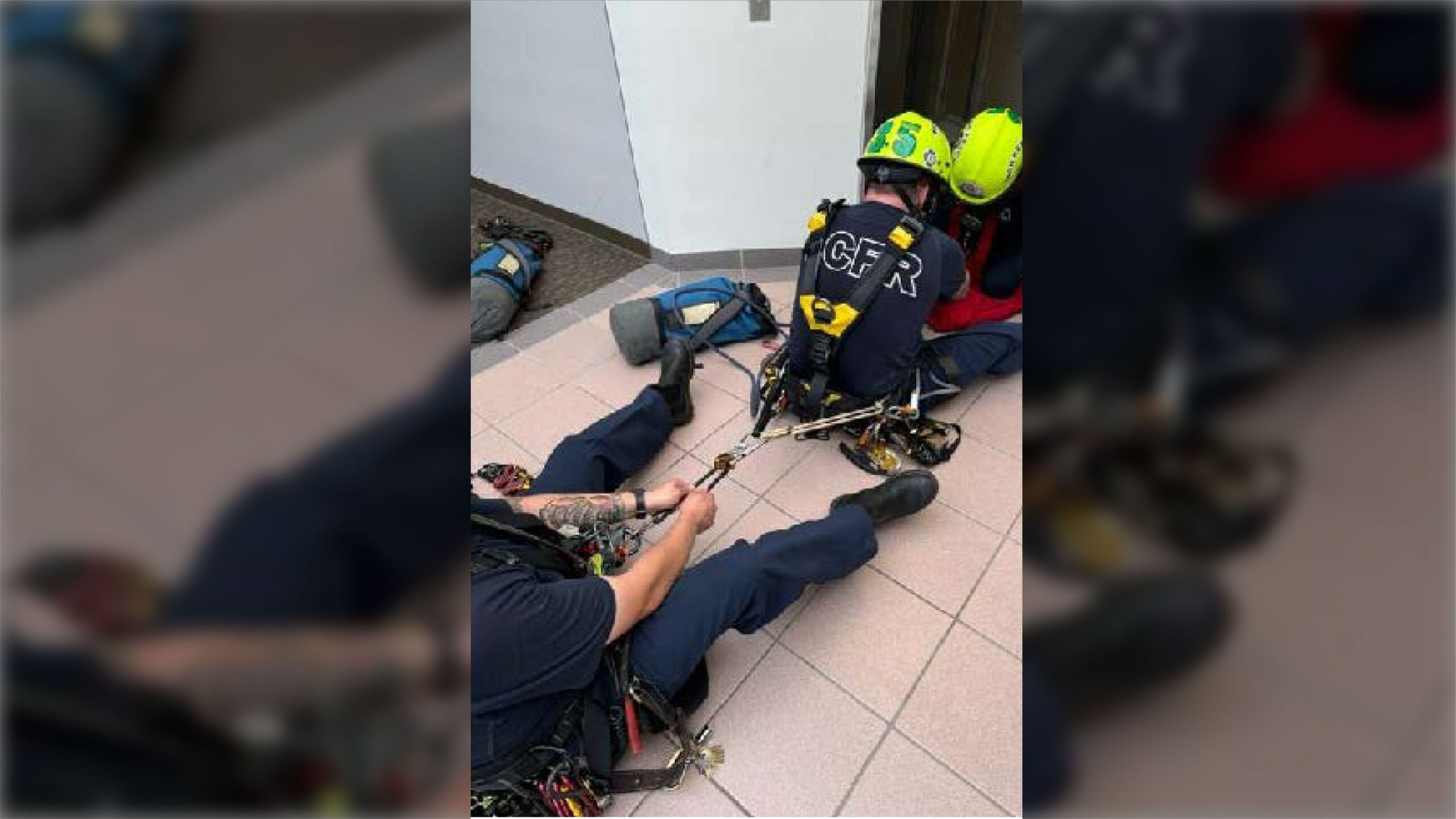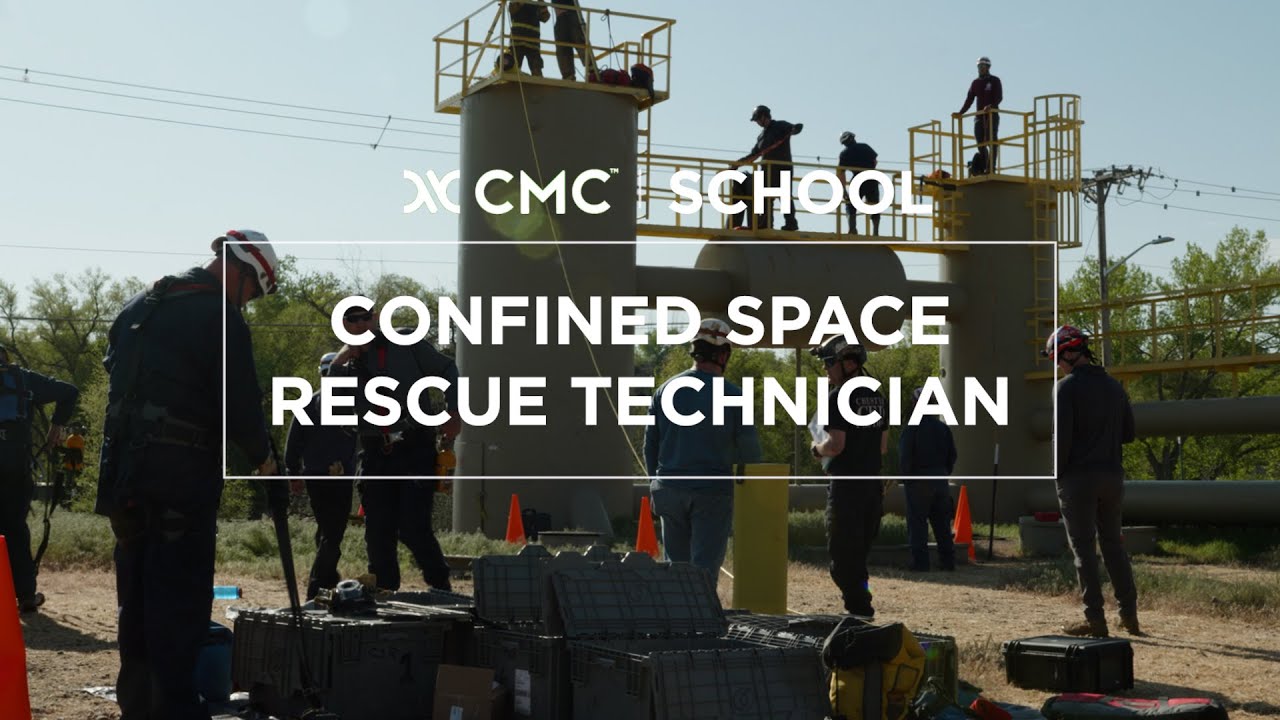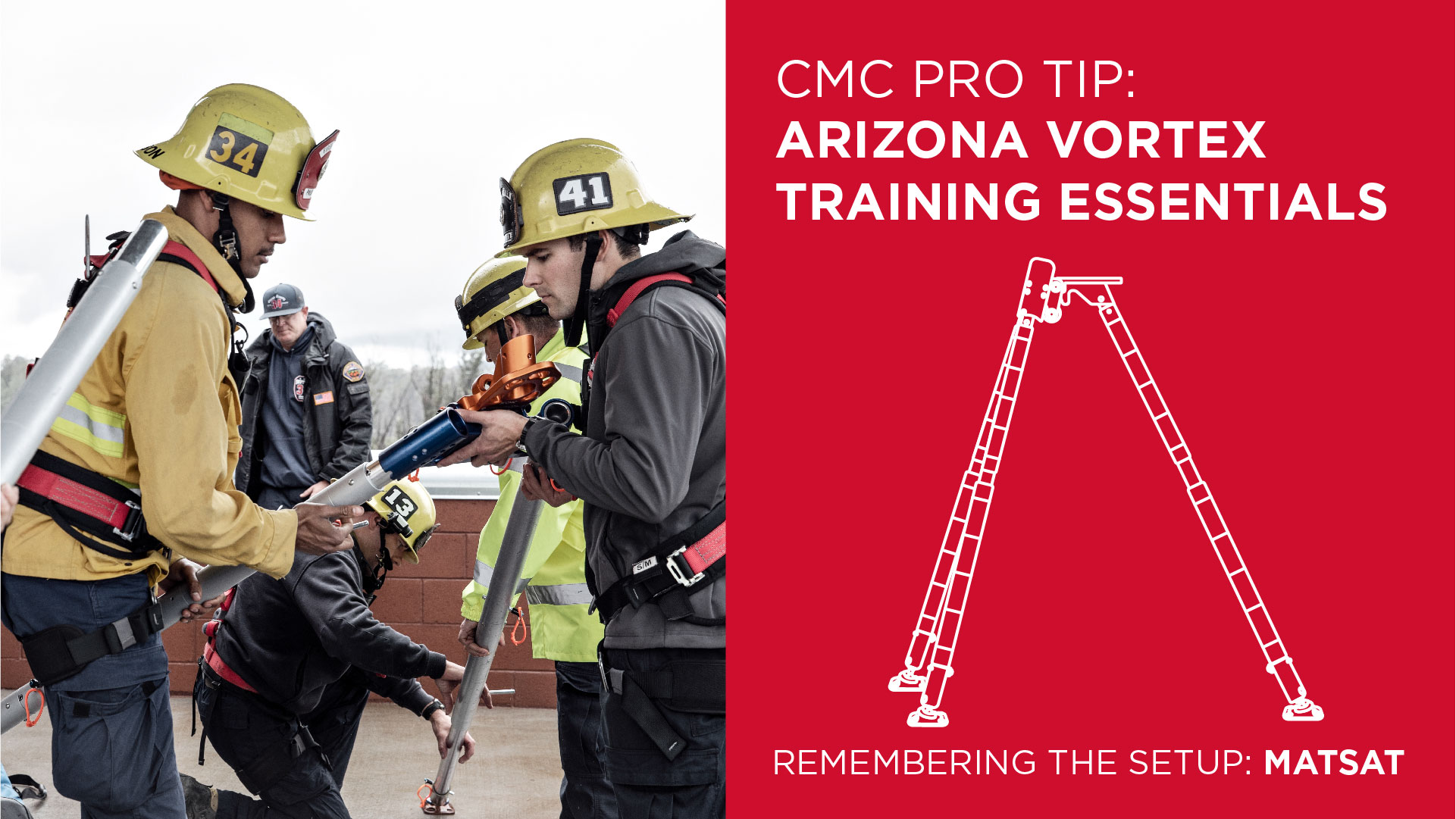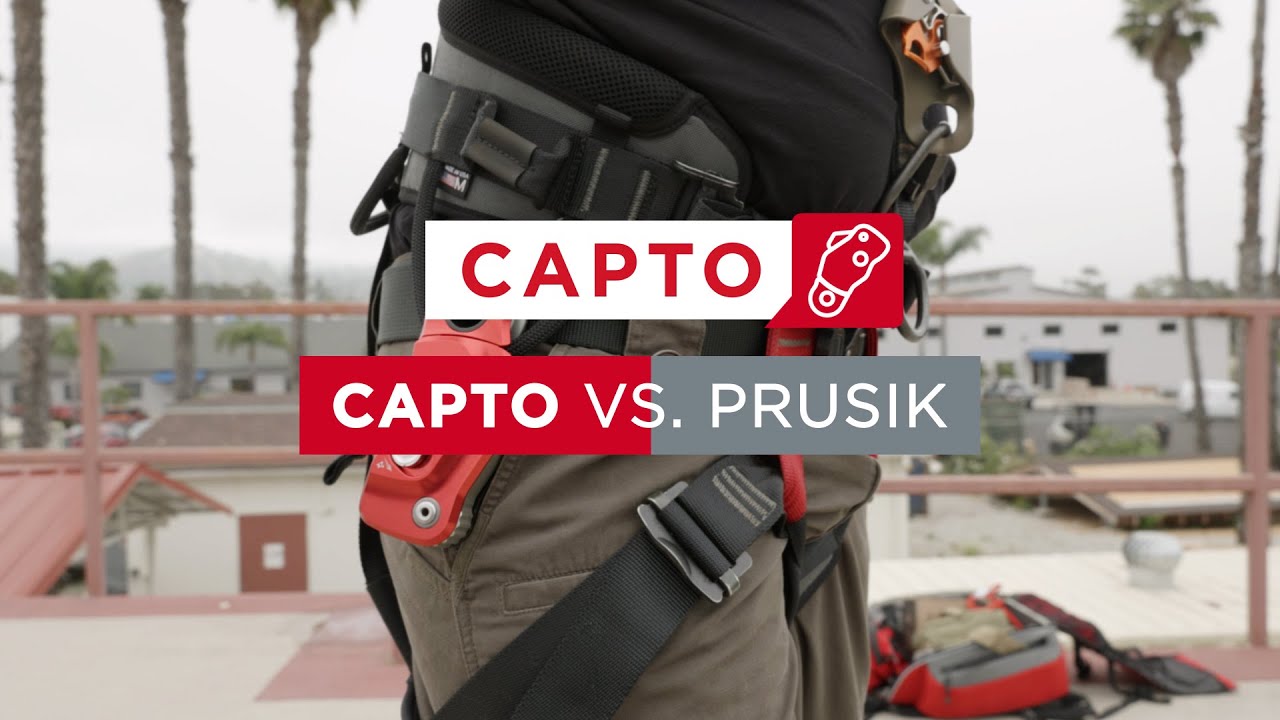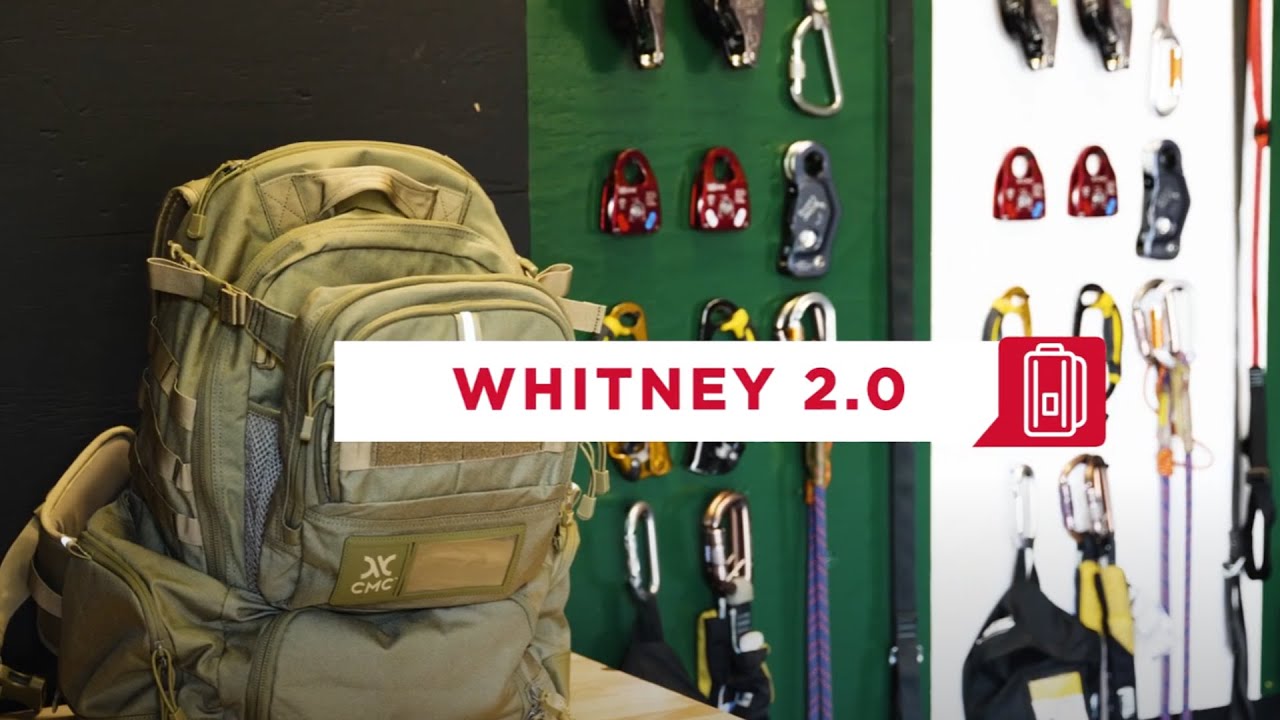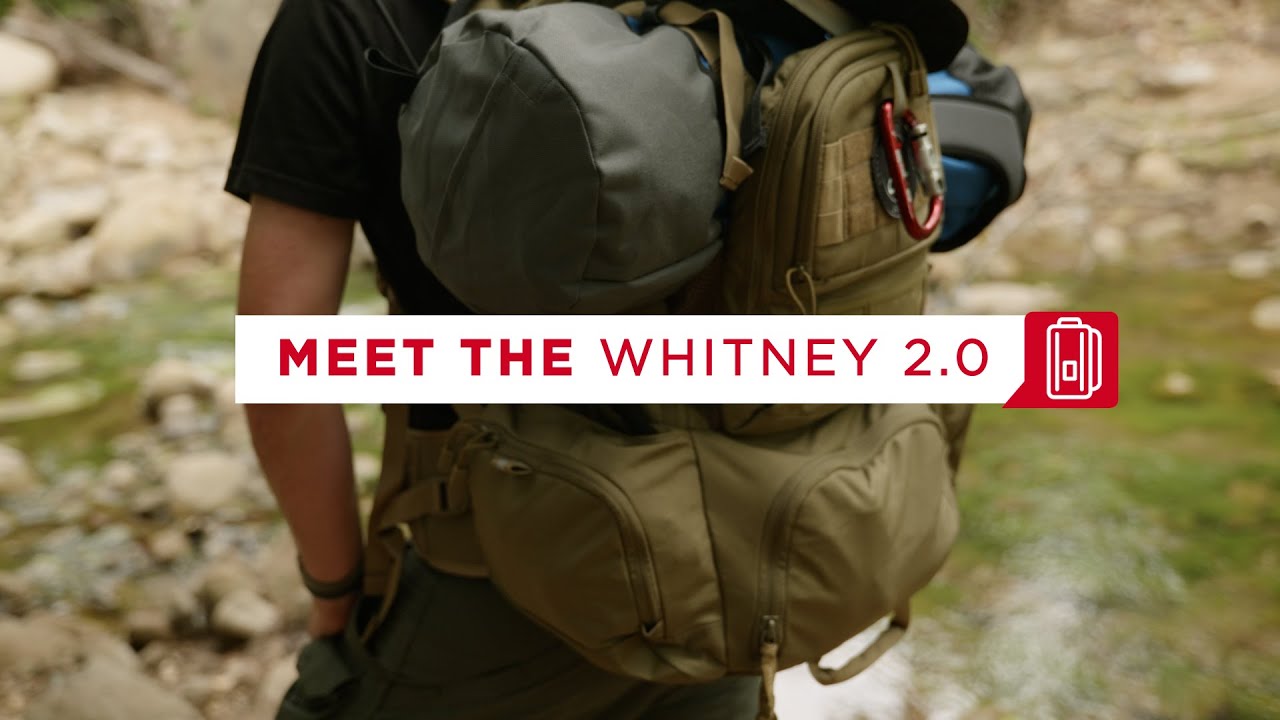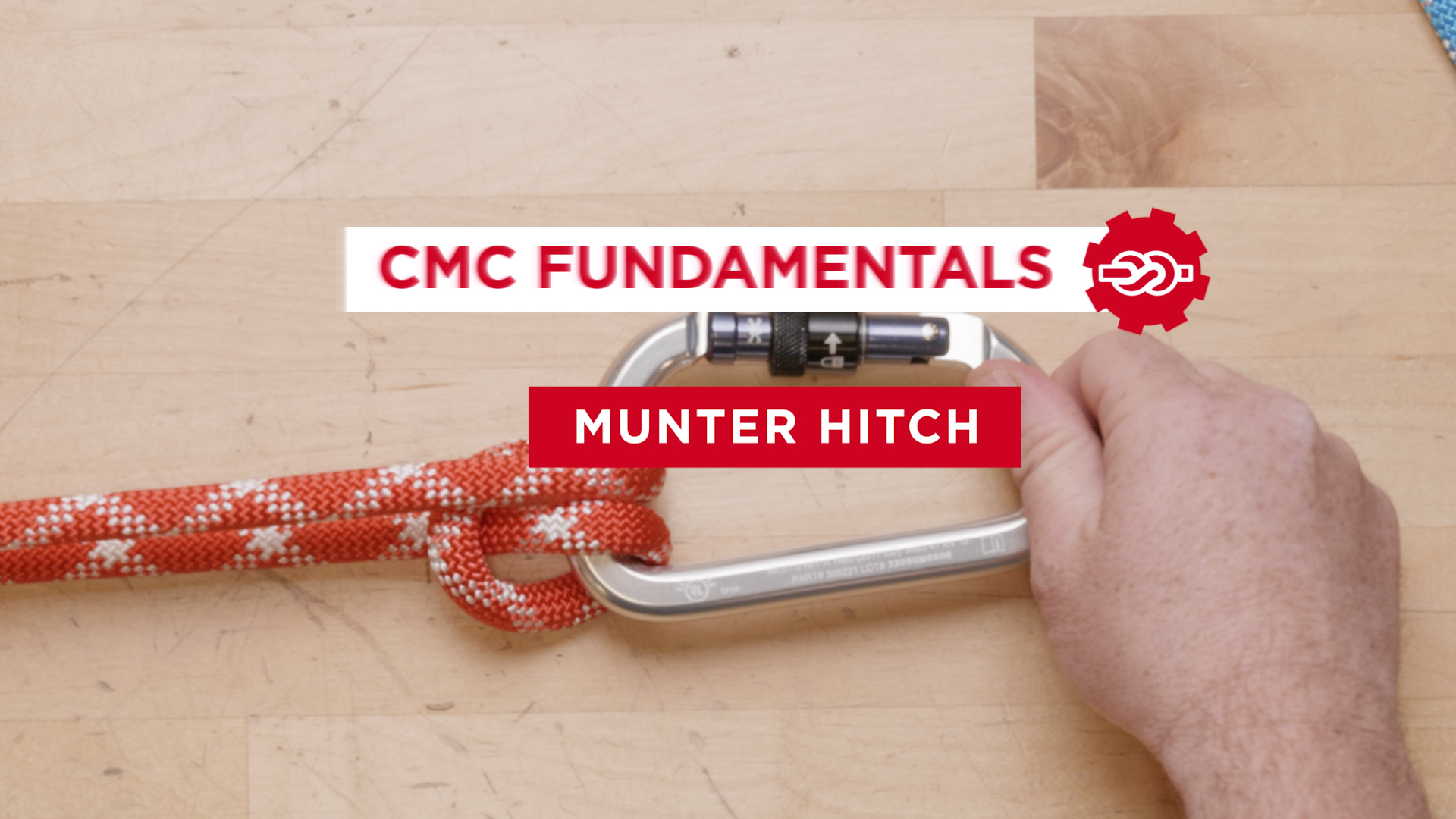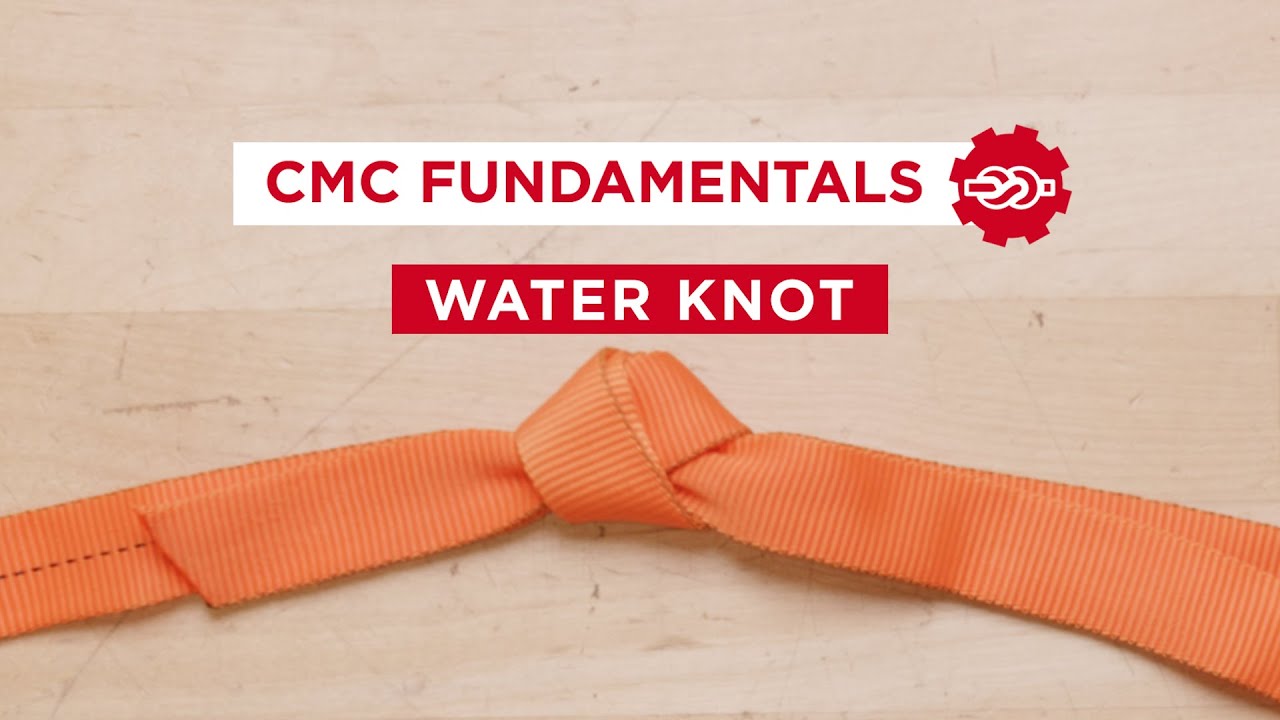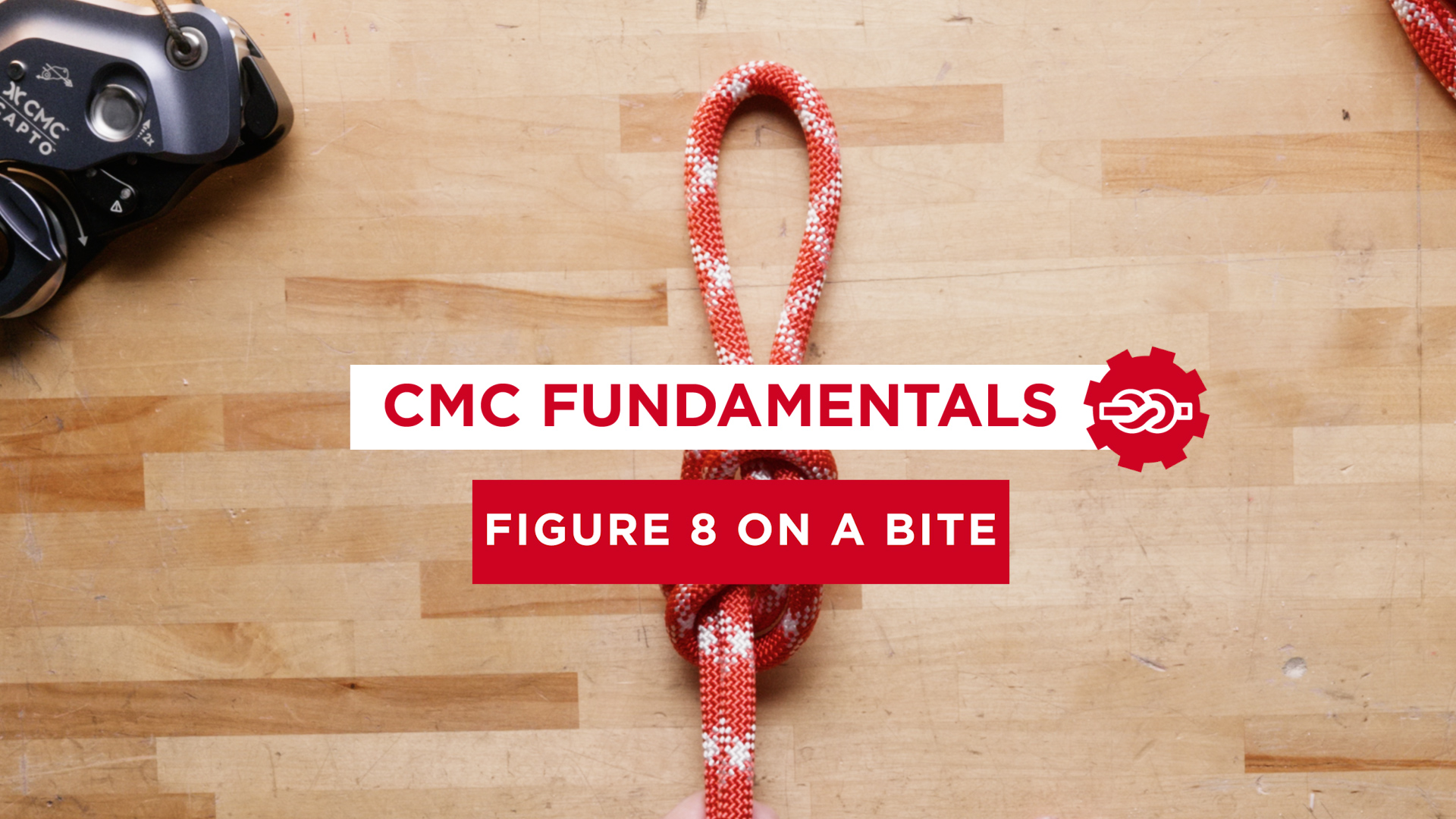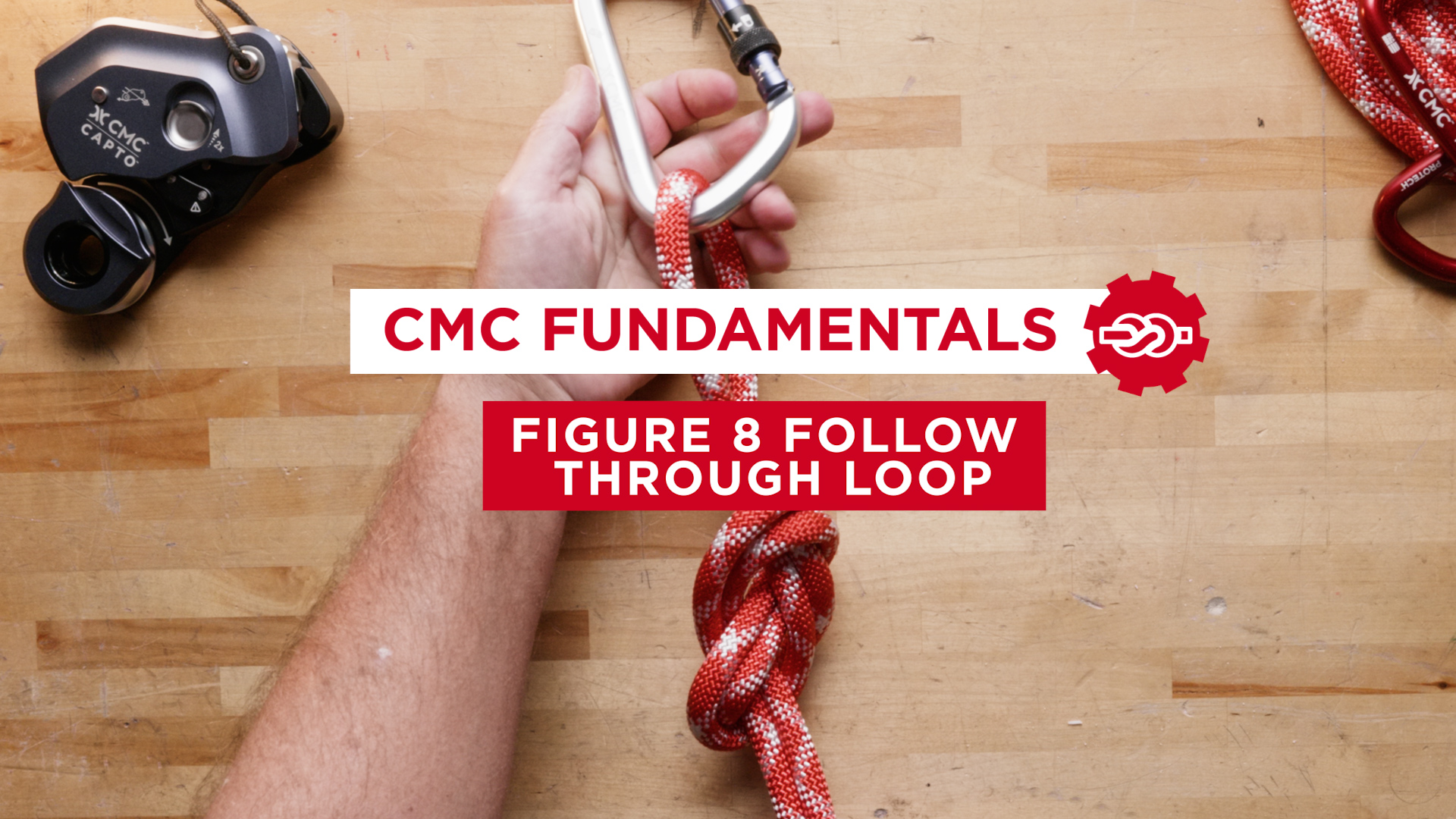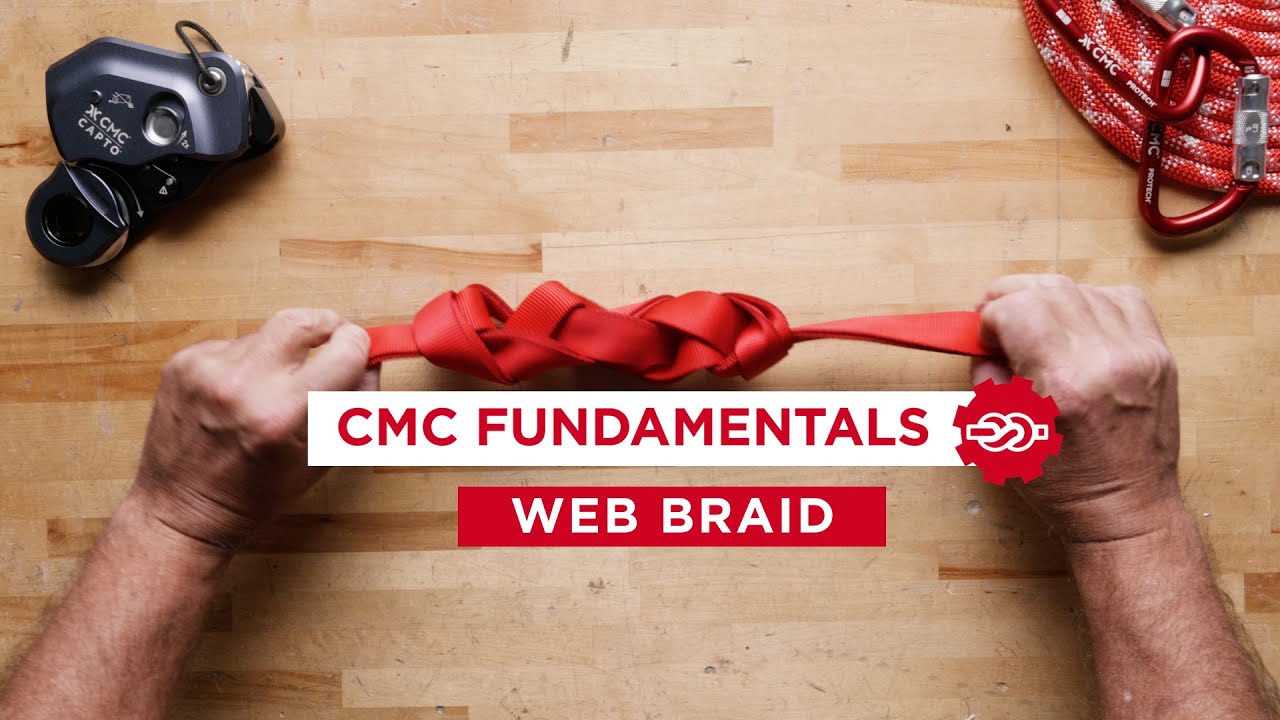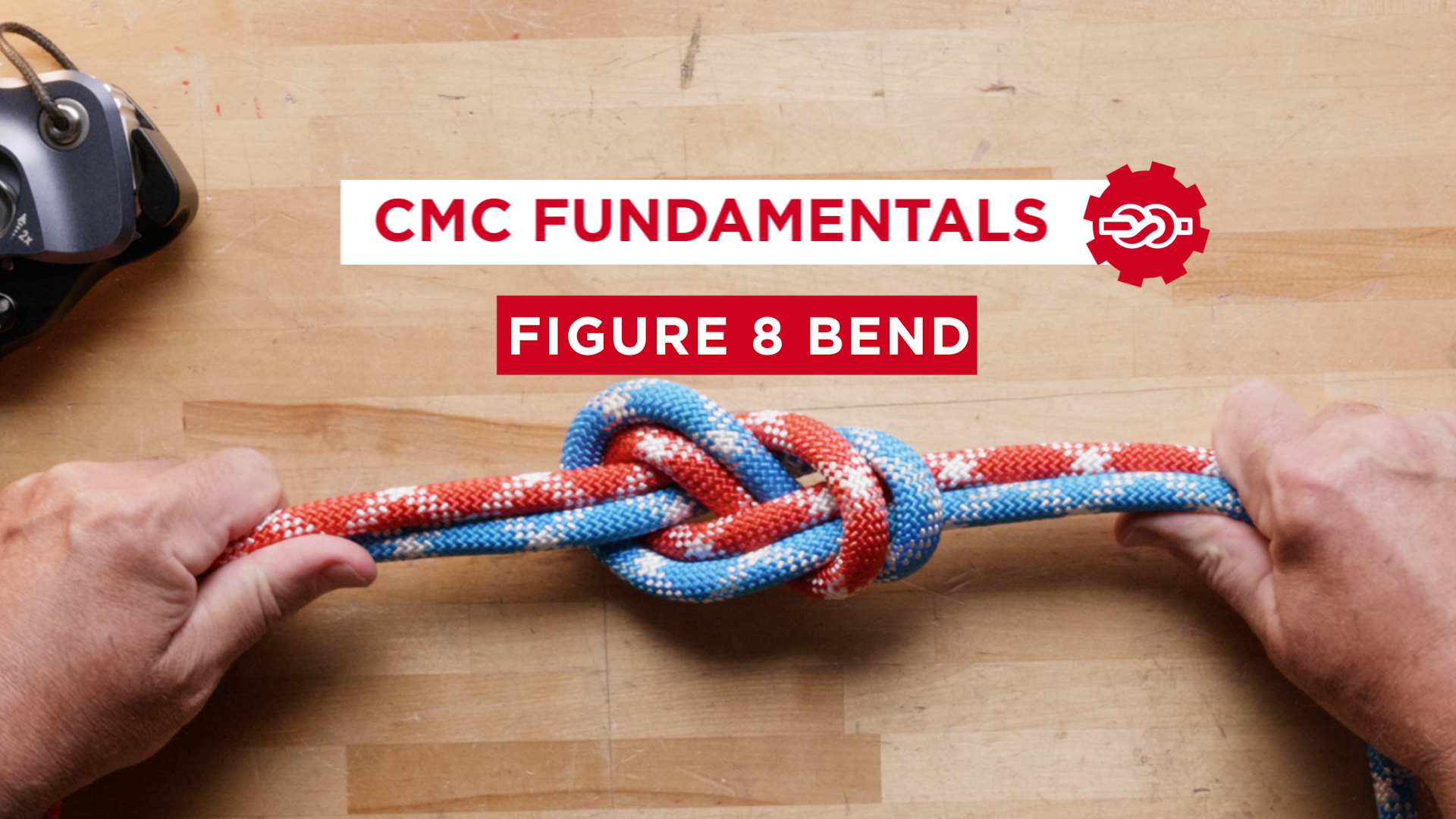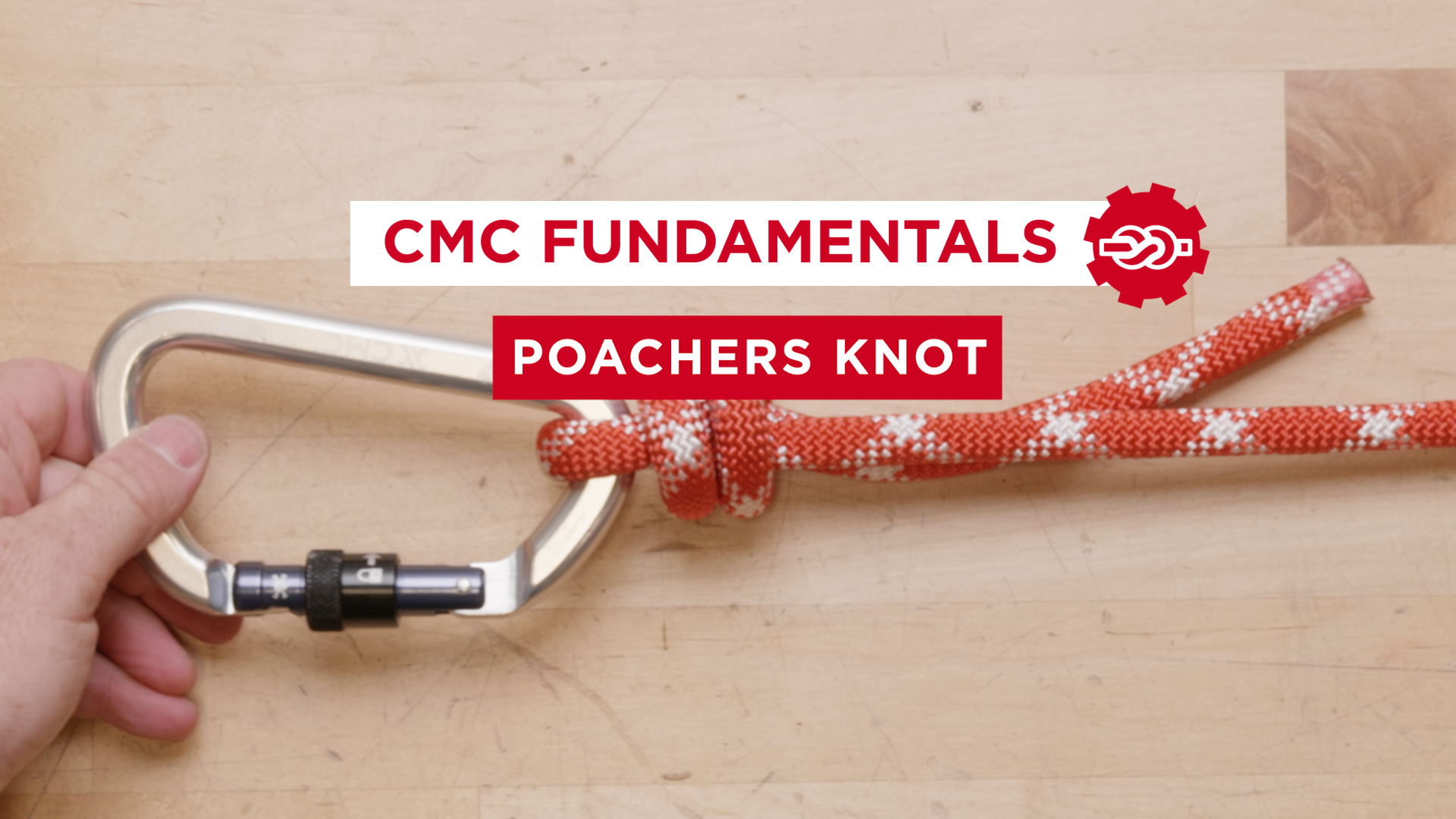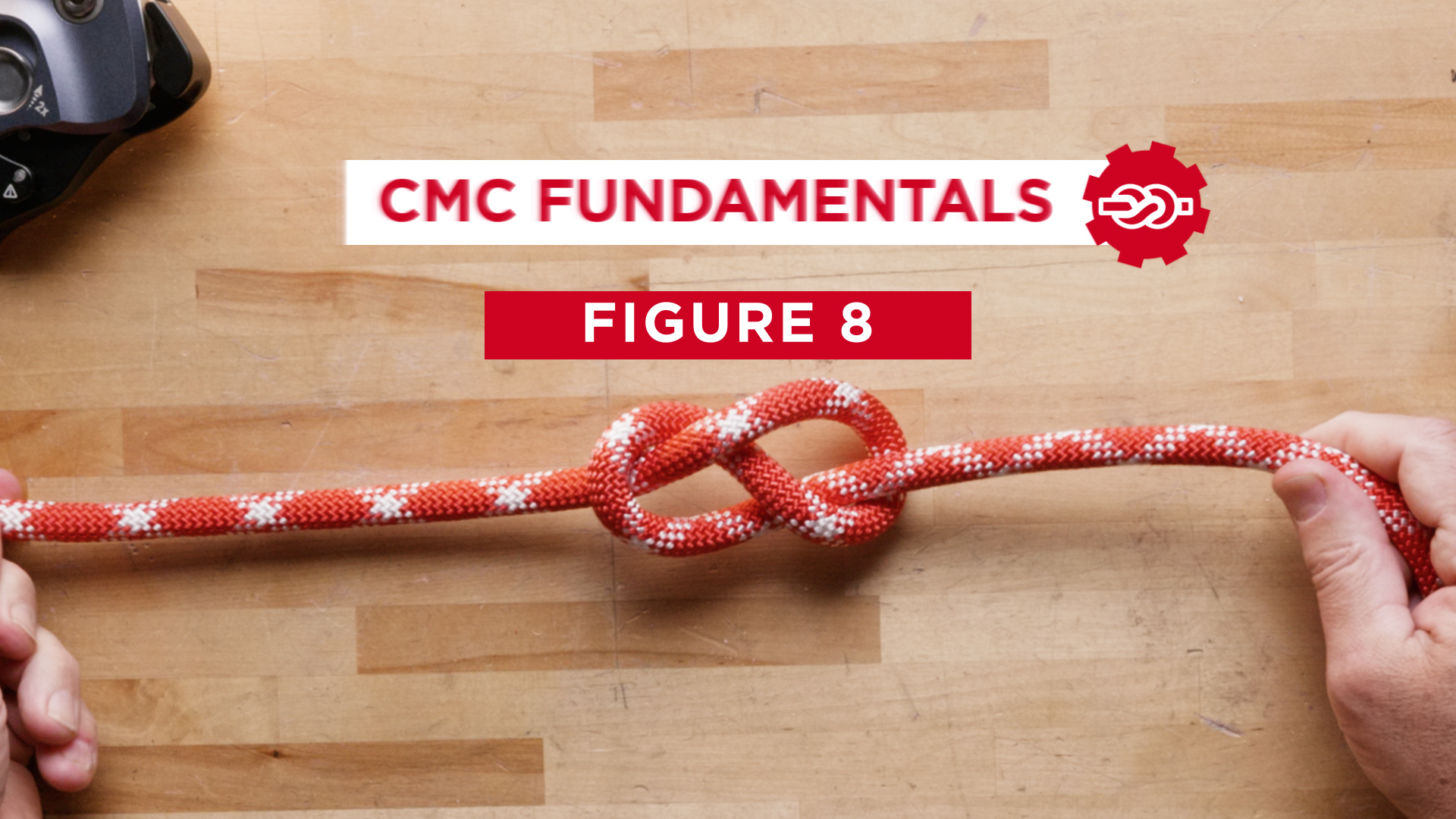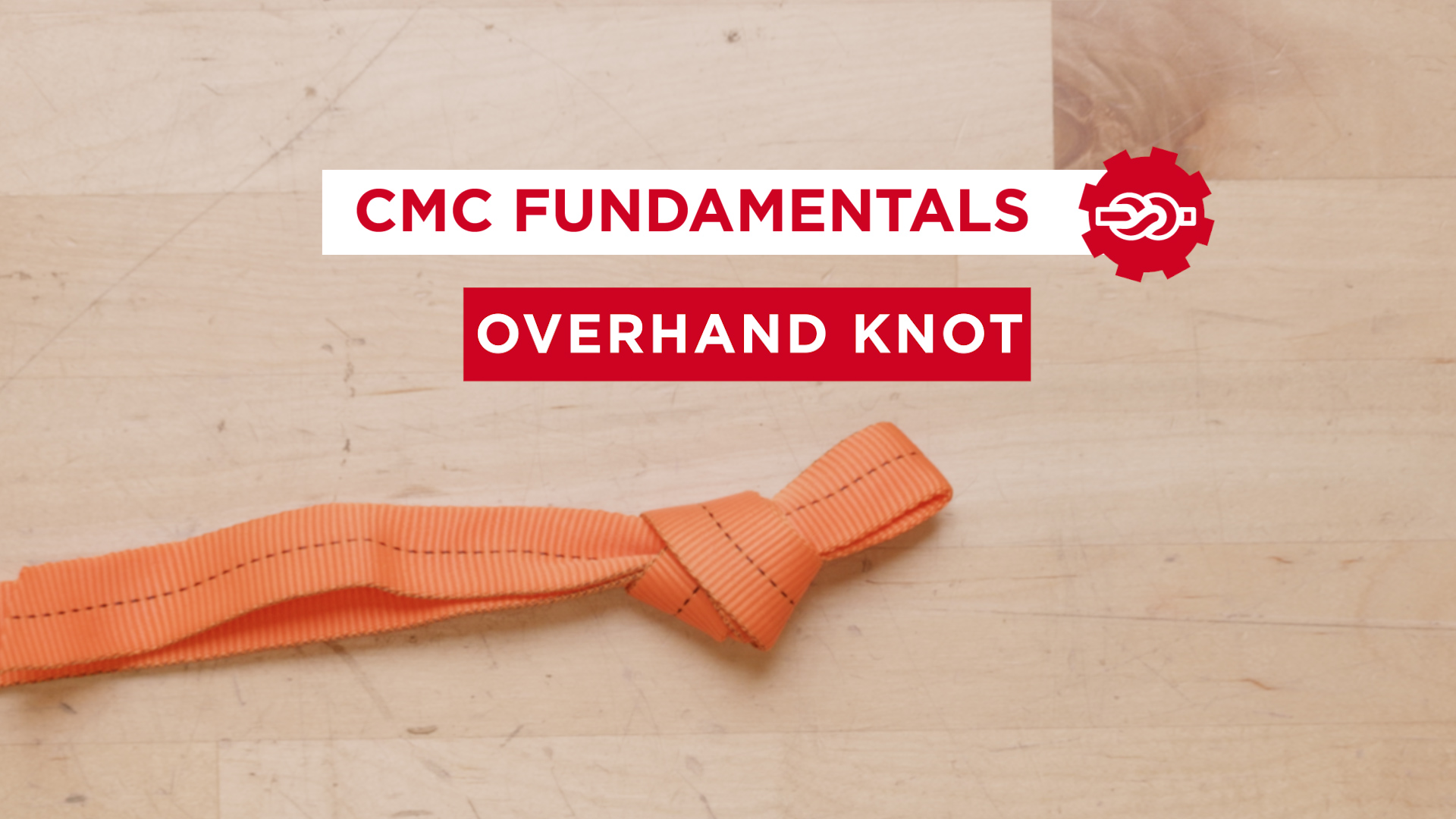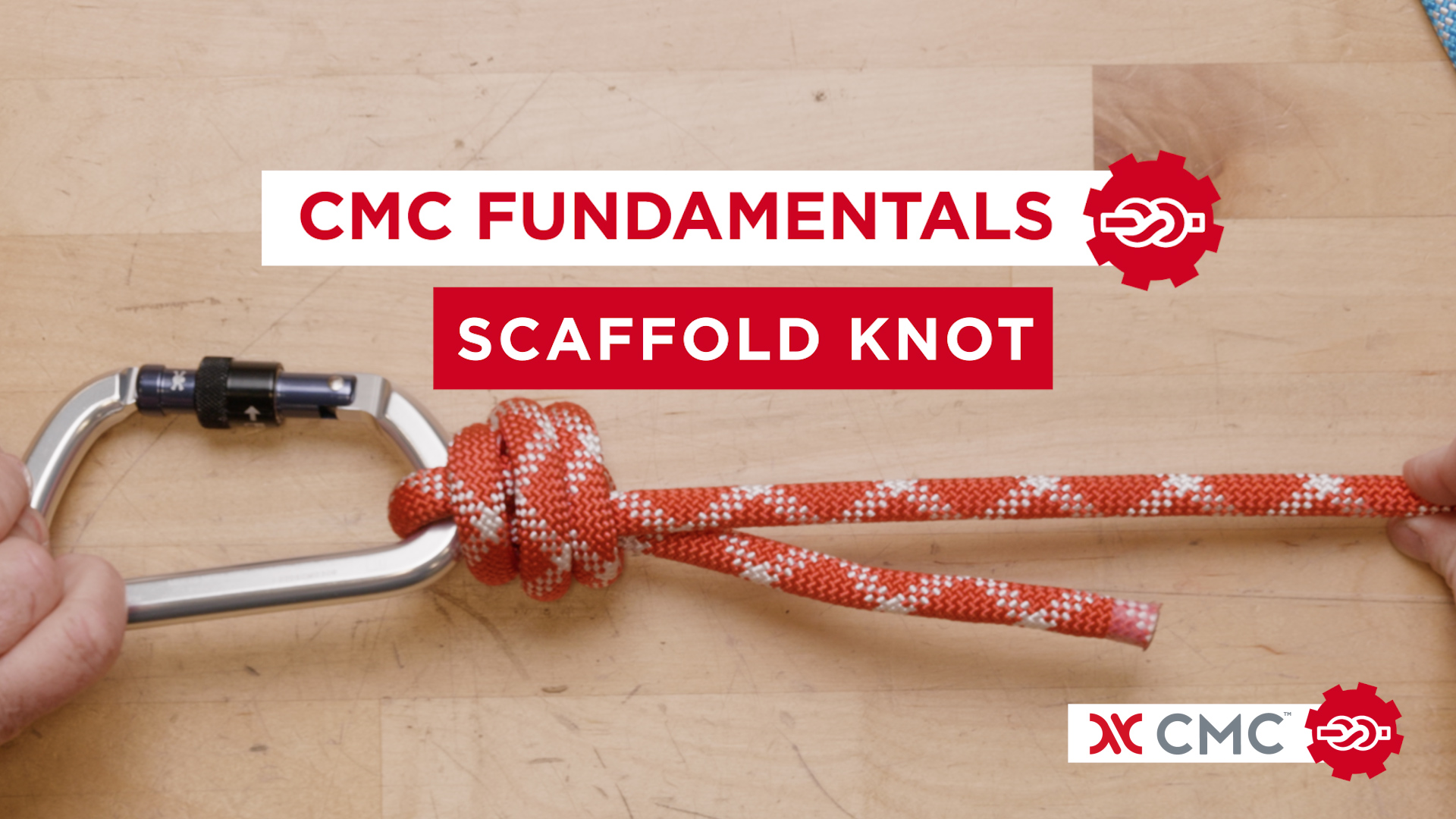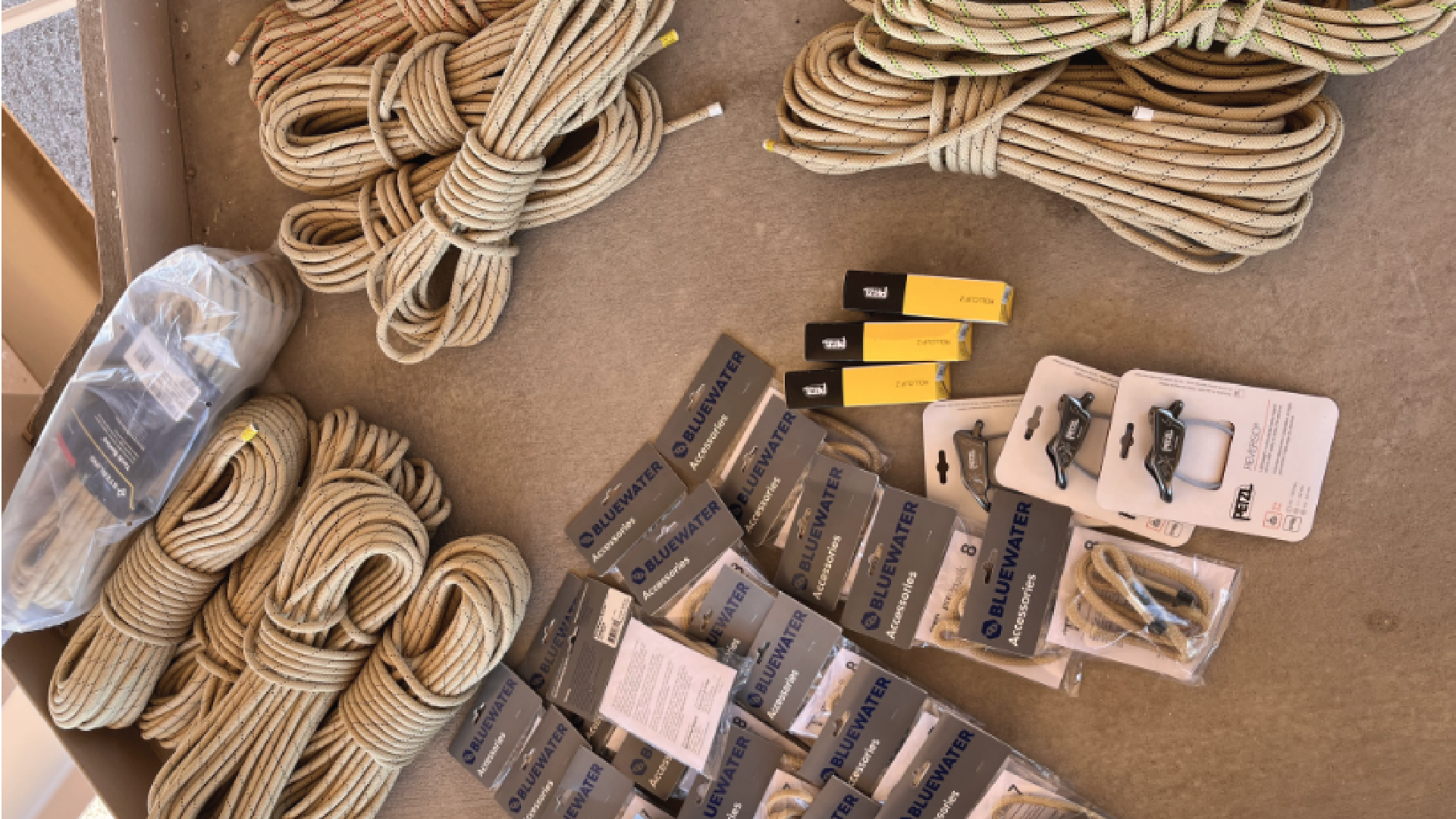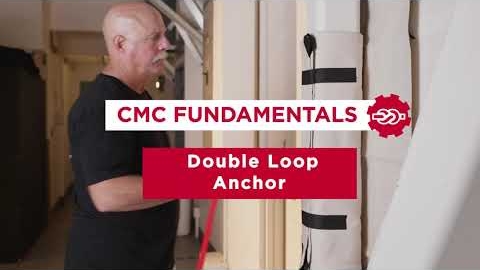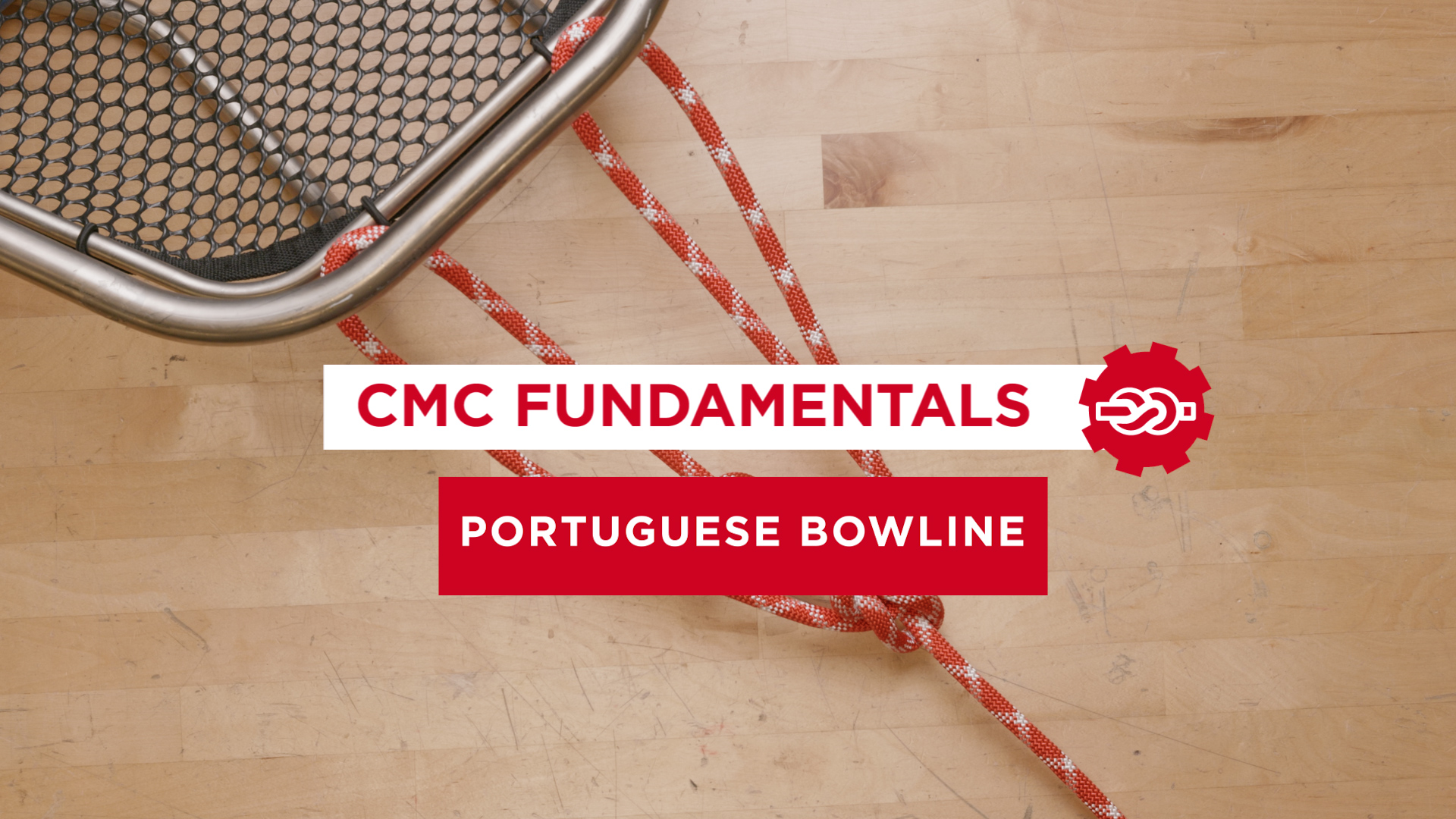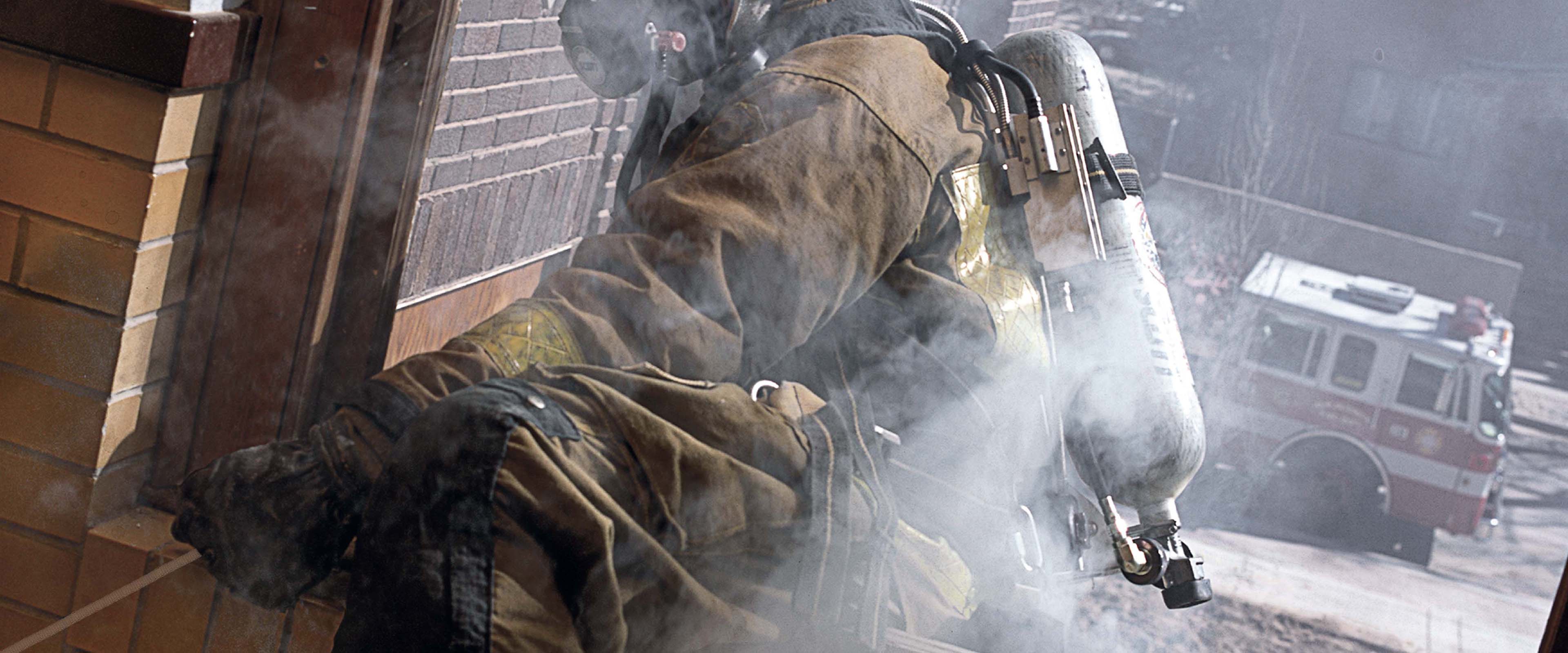
Is My Escape Line Still Safe After … ?
Is My Escape Line Still Safe After … ?
An investigation into the fatigue strength of aramid fibers in escape applications.
1.1 Introduction/ Background
Over the last few decades the prevalence of aramid fiber cordage and webbing used in Fire Escape Systems has increased. The Fire Resistant (FR) properties of the aramid fibers are favorable for elevated temperature environments and used primarily to meet the design requirement for product certification. NFPA 1983, the Standard for Life Safety Rope and Equipment for Emergency Services defines Fire Escape Rope as “Rope dedicated solely for the purpose of supporting people during emergency self-rescue (self-escape) from an immediately hazardous environment involving fire or fire products…” The partial intent of this definition is such that Fire Escape Ropes and systems are designed and tested for limited use applications. However, in reality, many escape systems are subjected to frequent training evolutions. Fire Escape Ropes and Systems used for training are commonly returned to service provided they pass basic visual and functional inspections with little thought or research into the residual strength of the rope after a number of uses.
A key source of stress on the rope is due to the pinching and bending of the rope in and around escape and other descenders over a relatively short length (<50 ft / 15 meters). This presentation will look at the residual strength of rope and web made from various fiber types when subjected to escape device-like bending conditioning. By conditioning and subsequently measuring the breaking strength of the samples subjected to various numbers of fatigue cycles, we hope to generate a clear curve of strength loss vs. use. This data will help inform the industry on the potential service life of FR escape systems and how many bending cycles Fire Escape ropes should be subjected to. This research will provide empirical data to help answer the question “Is my Fire Escape Line still safe after……?”
Additional information is also presented in this ITRS Paper on Fire Escape Web Lifecycle Performance.
1.2 Purpose
There is currently a lack of data available regarding the longevity of aramid fiber ropes and web when subjected to use in bailout scenarios. The goal of the tests summarized in this document is to provide empirical data that can be used to help quantify service life limitations of FR Escape Systems and help agencies establish retirement criteria.
1.3 Scope
This test series is focused on isolating as many variables as possible by subjecting the test samples to the same conditioning method for consistency. Residual breaking strength is compared amongst fiber types and construction post-conditioning to relative control samples. Technora® is currently the most popular aramid fiber used in FR Escape line; therefore this series of this test will focus on this particular fiber.
1.4 References
National Fire Protection Association (NFPA) 1983 – Standard on Life Safety Rope and Equipment for Emergency Services, (Editions 1995 – 2017) Is My Escape Line Still Safe After…. ? ITRS 2017
2 Test Method
2.1 Conditioning Test Setup
All specimens were subjected to a 180-degree bend around a 0.5 inch (12.7mm) forged steel O-ring, 3 inch (7.6 cm) inside diameter. All surfaces were smooth. The conditioning area measured approximately 12 inches (30 cm) in length.
The conditioning apparatus was situated vertically and included a hydraulic cylinder and secured on one end of the test specimen and a mass secured to the opposite end. The mass used was 300 lb (136 kg) unless otherwise noted. The friction varied between up/down strokes of the cylinder, but the average force measured between up/down strokes was 300 lbf. One travel of the hydraulic cylinder (up or down) = 1 cycle. The cycle action was automated using Arduino software. Tests were conducted by conditioning a set of five samples of a given escape line to a preselected number of cycles.
2.2 Residual Strength Test Equipment (Vertical Rope Test Machine)
- Omega Engineering low-profile load cell (model LCHD-20K)
- DaqView data acquisition software (set to acquire 200 samples per second)
- Rate of pull approximately 6 inches (15 cm) per minute
- Rope and web wrapped around 4-inch bollard (10 cm)
2.3 Materials Used
For this introductory look into the fatigue properties of aramid fibers, CMC used materials which were readily available for testing, and which had a known service history. These were the CMC Fire Escape Web, CMC ProSeries® Line, and CMC Escape Line.
2.3.1 CMC ProSeries® Line
![]()
- Diameter 7.5 mm
- 100% Technora® fiber
- Certified NFPA 1983 – FR Escape Line
- Listed 3σ MBS: 32 kN (7,193 lbf)
2.3.2 CMC Fire Escape Web
![]()
- 100% Technora® fiber
- Certified NFPA 1983 – FR Escape Web
- Listed 3σ MBS: 6,070 lbf (27 kN)
2.3.3 CMC Escape Line
![]()
- Diameter 8.2mm
- Polyester sheath / nylon core
- Certified NFPA 1983 – Escape Line
- Listed 3σ MBS: 21 kN (4,720 lbf)
3 Observations
The conditioned samples were inspected prior to pull testing for residual strength. The wear imposed by the conditioning appeared to be minor with no obvious loss in structural integrity or telltale signs of degradation. In most cases there was a degree of material transfer (metal oxide) observed as a result of polishing the steel O-ring over the course of cycling. All samples could visually be considered acceptable for return to service.
4 Residual Strength Results
4.1 CMC ProSeries® Escape Line – 100% Technora® Fiber
The 100% Technora® rope showed substantial strength loss due to the conditioning. The strength loss increased as additional cycles were completed.
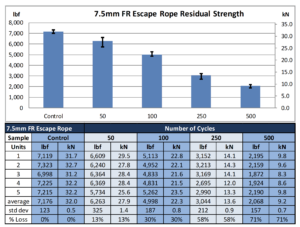
4.2 CMC Fire Escape Web – 100% Technora® Fiber
The 100% Technora® web also showed strength loss due to the conditioning, however far less pronounced than the rope version. The strength loss also increased as additional cycles were completed. Is My Escape Line Still Safe After…. ? ITRS 2017
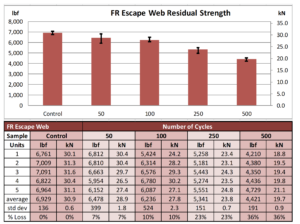
4.3 CMC Escape Line – Polyester Sheath/Nylon Core Escape Rope
The blended (Poly/Nylon) rope showed significantly less strength loss due to the conditioning when compared to the rope or web. The strength loss increased with the number of cycles.
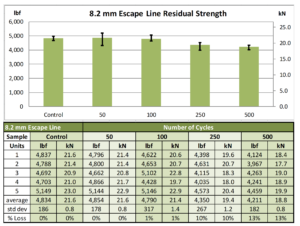
4.4 Summary
All samples show some strength loss after cyclic conditioning. The 100% Technora® rope showed the largest impact (71% strength loss after 500 cycles) while the web and non-aramid rope showed significantly smaller drop in residual strength.
Only the FR Escape line, after 500 cycles, dropped below the minimum strength requirement of NFPA 1983 of 3,034 lbf (13.5 kN) for new escape rope and systems.
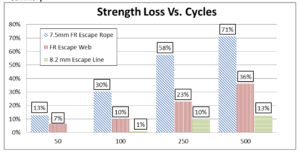
5 Comparative Testing (N=1)
CMC also performed a series of quick tests with a single test sample (N=1) to explore various parameters and determine areas for further investigation. The summary of these results are presented below:
5.1 250 cycle test with 7.5 mm FR Escape Line using 100 lb (45 kg) mass
- Residual breaking strength: 3,994 lbf (17.8 kN)
- Percentage loss: 44%
This test shows that while the applied load has an effect on residual strength, the predominant driver of the strength loss is bending friction around the O-Ring. The 300 lbm test resulted in a 58% loss after 250 cycles, i.e. a reduction of mass to 33% of the original test setup still generated 76% of the loss in strength experienced in the original test.
5.2 25 rappels (300 lbs / 136 kg) using Escape Device A with 7.5 mm FR Escape Line
- Residual breaking strength: 5,033 lbf (22.4 kN)
- Percentage loss: 30%
This test shows 25 cycles through escape device A generates about the same “fatigue” as 100 bending cycles around the O-ring.
5.3 25 rappels (300 lbs / 136 kg) using Escape Device B with 7.5 mm FR Escape Line
- Residual breaking strength: 6,203 lbf (27.6 kN)
- Percentage loss: 14%
This test shows 25 cycles through escape device B generates about the same “fatigue” as 50 bending cycles around the O-ring.
5.4 500 Cycles (300 lbs / 136 kg) using 11 mm Technora® sheath / nylon core rope
- Residual breaking strength: 6,965 lbf (31.1 kN)
- Percentage loss: ~ 25%
This test shows a Nylon core can mitigate some of the strength loss but still suffers from significant fatigue impact with high cycles.
6 Conclusions
The key take away of the testing presented in this report is that rope and webbing made with aramid fibers such as Technora® behave differently than standard poly/nylon rope and web. The results indicate that cyclic bending of aramid rope or web around a fixed O-ring, or the friction surfaces of a descender, result in a significant loss of the residual tensile strength of the line. The impact of this fatigue is especially dramatic in the case of 100% Technora® rope, but is also significant in 100% Technora® web and Technora®/nylon blended ropes.
The exploratory test results presented in Section 5 of this report also indicate that strength loss may vary according to the loads applied and the different interaction with various descent control devices. When interpreting this data, it is important to note that the strength presented is the tensile strength of the line itself. When used in an escape system, the system strength may be further reduced due to areas of stress concentration imparted on the line through the bends and pinch points within the descender.
The testing presented in this report is only an initial study, and CMC does not have enough data to recommend a specific allowable number of cycles or training evolutions for an escape system. However, the results indicate that special consideration should be taken with regards to the service life and retirement criteria of Fire Escape Systems. This is especially important for Fire Escape Systems that see regular training evolutions and also for aramid fiber lines used outside of low-cycle or limited-use applications.
The results of this research effort indicate that additional testing is needed to assure the safe use of aramid fiber products in escape applications.

